Located northwest of the province of Mendoza, Puente del Inca is a natural monument and icon tourist.
It is a rock formation that originates the same natural bridge over the Las Cuevas river, about 48 meters long and suspended 27 meters above the river.
In the area there are several open geological faults (cracks in the mountain) through which rainwater and meltwater seep to a great depth. Due to the extreme temperature of the subsoil, they heat up and the pressure returns them to the surface as thermal waters carrying a good concentration of mineral salts and iron oxide. Therefore, everything that covers the water It surrounds it with that characteristic color: orange, ocher and yellow. Some locals usually leave different everyday objects submerged for several days to petrify them and then sell them as souvenirs at the stalls along the route.
In 2005, it was declared a Provincial Natural Monument since the Puente del Inca protected area has rocks over 200 million years old and landslides.
The formation of these rocks belong to 3 periods: Permo Triassic Age, Jurassic Period and Cretaceous Period.
Let's talk a bit co of your story
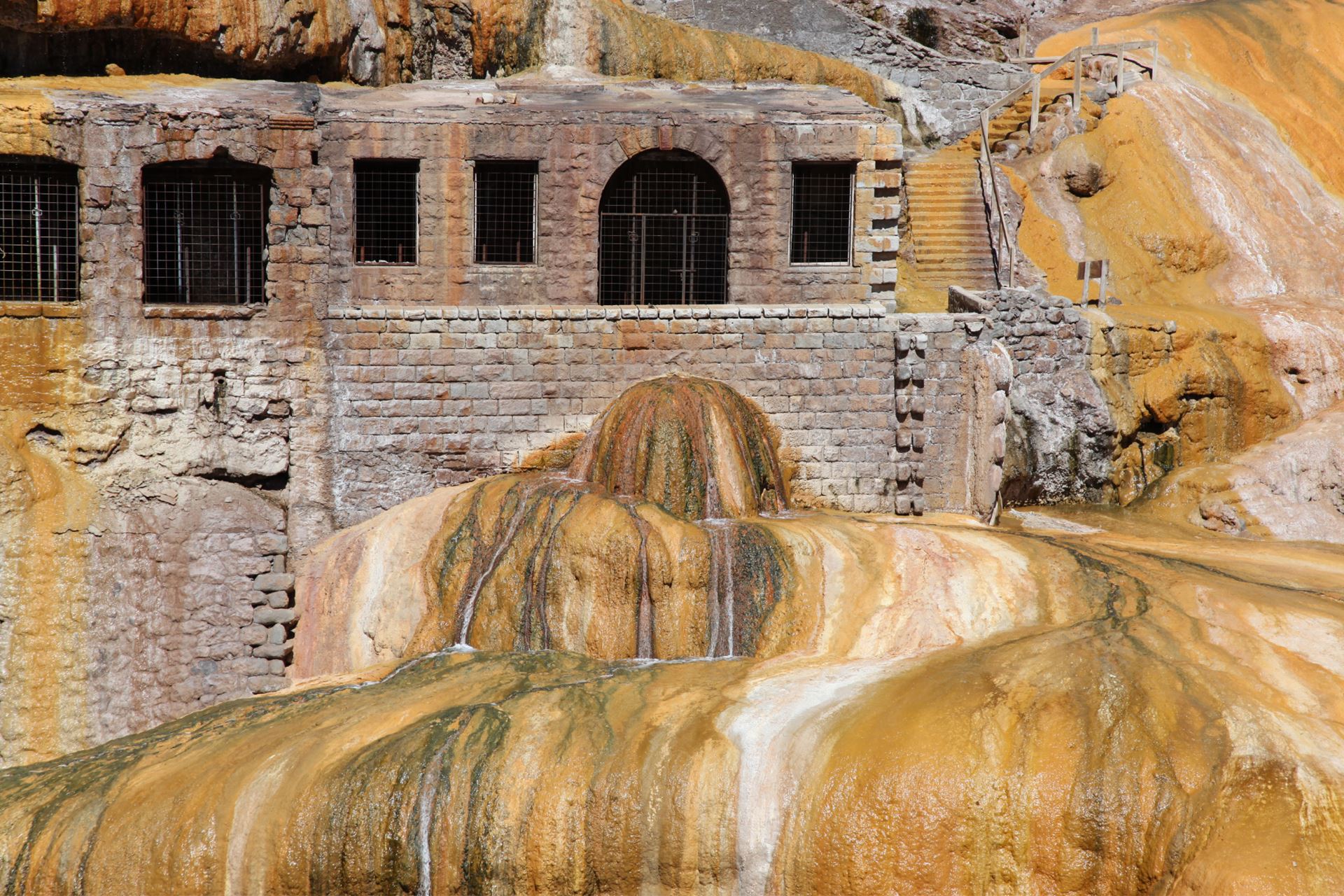
In 1817, during the campaign of the Army of Los Andes, this was one of the steps enabled to cross the Cordillera.
On the other hand, in 1925 the Puente del Inca Hotel was built, well known and popular in its time. Unfortunately, it was then totally destroyed by landslides in 1965. Only its small colonial chapel remained where the hotel staff settled for a time, but it was finally abandoned. A feature to highlight is that next to the Puente del Inca, there are 5 hot springs with high temperatures that reach 38 °C. These thermal baths They are considered good for health due to the healing and anti-stress properties of their minerals.
The locals know how good it is to soak in these thermal baths. They all agree on one point: they consider that bathing in its waters gives a sensation of immediate and pleasant renewal. But unfortunately since the avalanche suffered in the area, since 2005 the thermal area, the old-fashioned church and the old hotel complex have been fenced off and entry was prohibited. Currently, visitors can observe it from a distance from a fence, which allows you to fully see its entire structure and take wonderful photos.
Do you know the legend of the Inca Bridge?
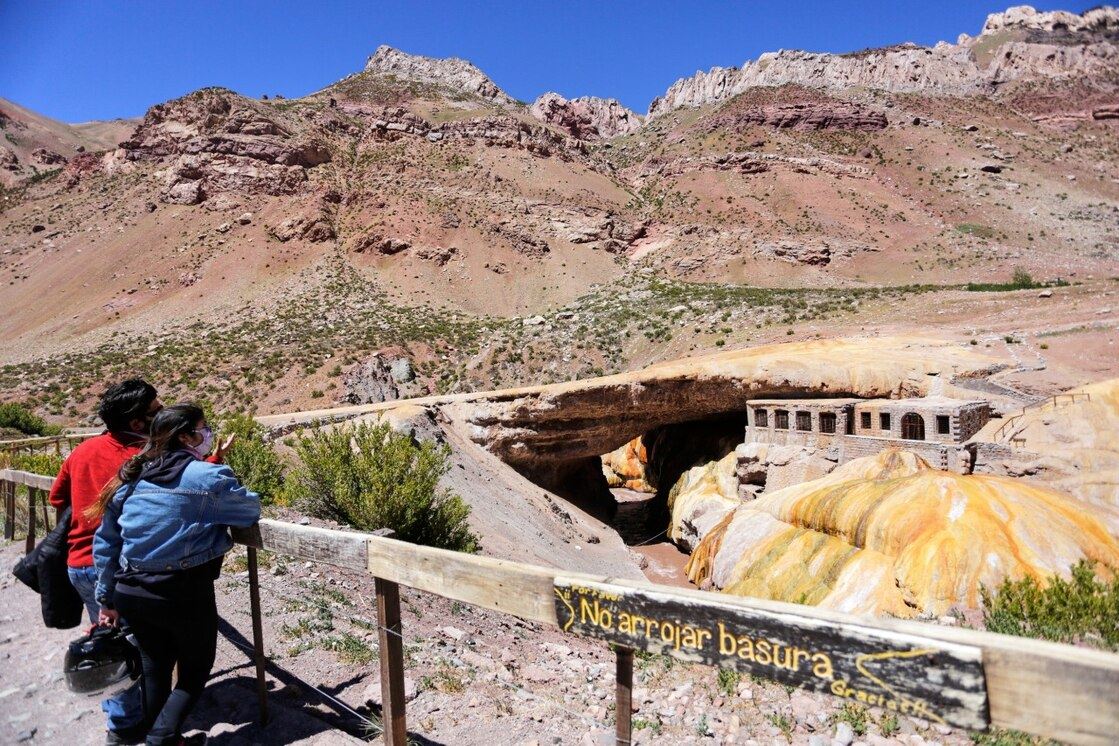
Each magical corner has its history and also its legend:
They say that the heir to the throne of the Inca Empire suffered a paralysis, for what the counselors recommended to his father to go from Cuzco to the slopes of this area to find the cure and save himself.
So that they could cross the river, the warriors who accompanied him were They hugged each other and formed a “human bridge” where the Inca passed with his son to the hot springs where the cure was.
When they turned around to thank them for such a great gesture, they were petrified , thus creating this incredible bridge.
Visit the handicraft and gastronomy stalls
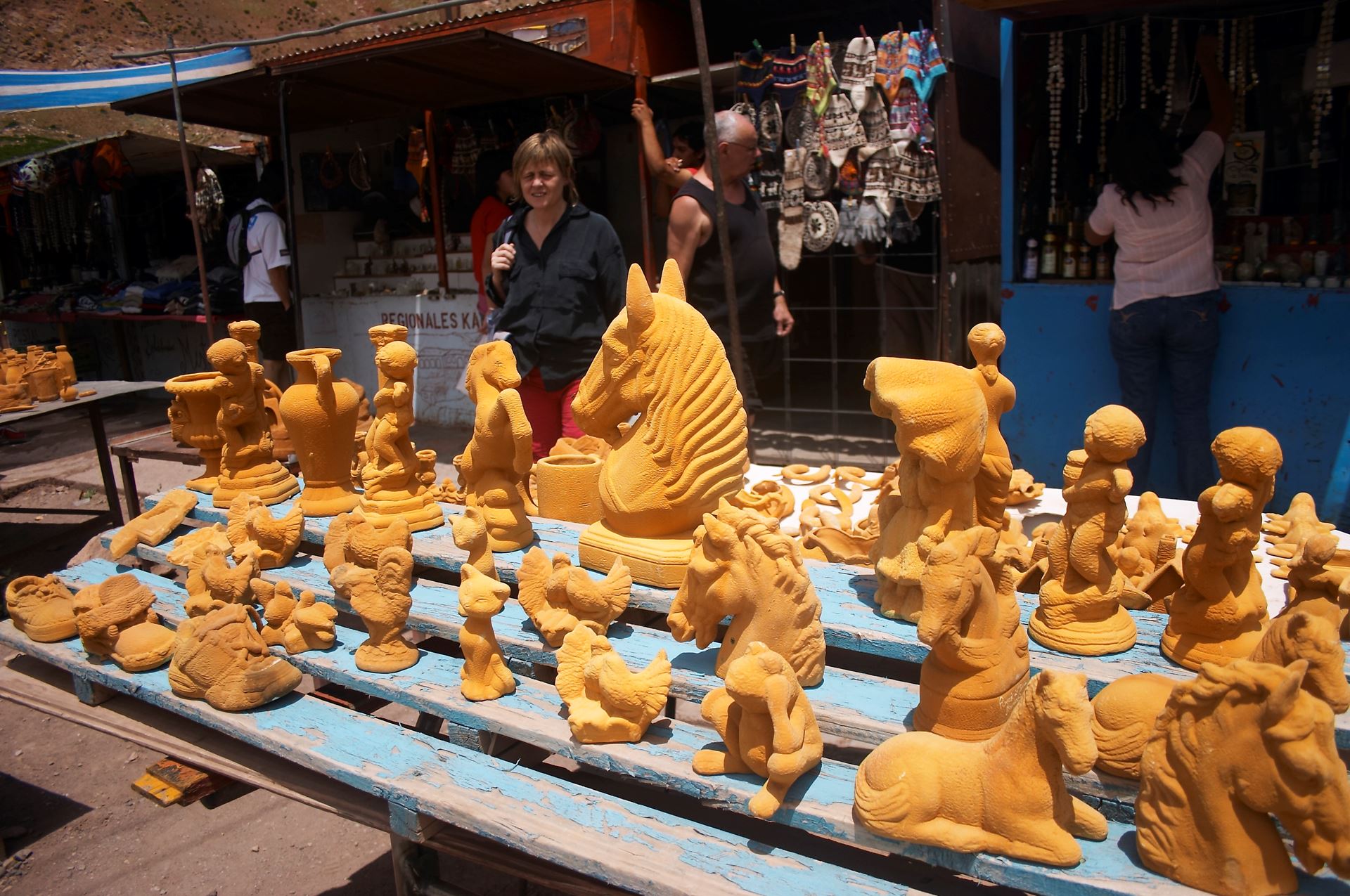
Around this great natural phenomenon, unique in South America, you can find a commercial area with small houses and stalls , where typical crafts covered by sulfur are offered of the hot springs. You can also buy blankets made on looms and garments produced by hand with guanaco wool: hats, gloves, socks and sweaters.
In addition, you can buy souvenirs to take away as a gift carved in wood. From boxes, furniture and elements for cooking. There are also charms with semi-precious stones: aquamarine, citrine, quartz, spinel, topaz, moonstone and labradorite.
There are also stalls that offer food on the go such as sandwiches, choripanes, salads and roasted vegetables. I recommend you try in some of the small shops the Mendoza meat empanadas with delicious olives from the region or if you prefer something sweet the shaved pancakes.
In these stalls you will have the opportunity to try the typical foods of Mendoza or take away products such as preserves or jams made with the delicious seasonal fruits that are grown in the farms: grapes, peaches, pears, apples, melons, alcayotas.
You can also see a few meters from these posts, the abandoned train station, where tourists used to arrive at the hotel located a few meters from the Inca Bridge. Those who visit this space, walk along the rusted roads, to observe the landscapes of the Andes Mountains and take photos of the broken sleepers, the twisted bridges and the collapsed houses that show the passage of the avalanche several years ago.
Get to know the historic Andinistas Cemetery
A few kilometers from the commercial area of Puente del Inca (1.5 kilometers along the RP7), you can visit the mountaineering cemetery. At the end of the 19th century, a Campo Santo was established on this site to bury the workers who died in the construction of the Trasandino Railroad . The first railway network that crossed the mountain range joining the cities of Mendoza and Los Andes, in Chile.
La The cruelty of the climate, the plagues and the harshness of the work caused many to die and as their bodies were not claimed nor was there time to bring them down to the city, they were buried in this place, and for this reason the railway cemetery was erected in Puente del Inca (first name received).
Several years later it also became the cemetery of 127 mountaineers (which is why it bears its current name). Among the climbers are the first to be killed on Aconcagua, the Austrian Stepanek , who decides to attempt the summit alone and dies in the attempt. You can also find the plaque of Adriana Bance, French climber. She was the first woman to summit Aconcagua in 1942, in the company of Juan Jorge Link.
Another of the Recognized mountaineers, is Nelly Noller, the first Argentine to reach the summit of the Cerro, she was called "the white girlfriend of Aconcagua", since she died during the descent with her boyfriend, who had proposed to her at the summit. Several residents of the area, soldiers and explorers who passed through the region are also buried.
The cemetery is very small but it is worth seeing the history it carries and the incredible landscapes that surround it.
How to get there?
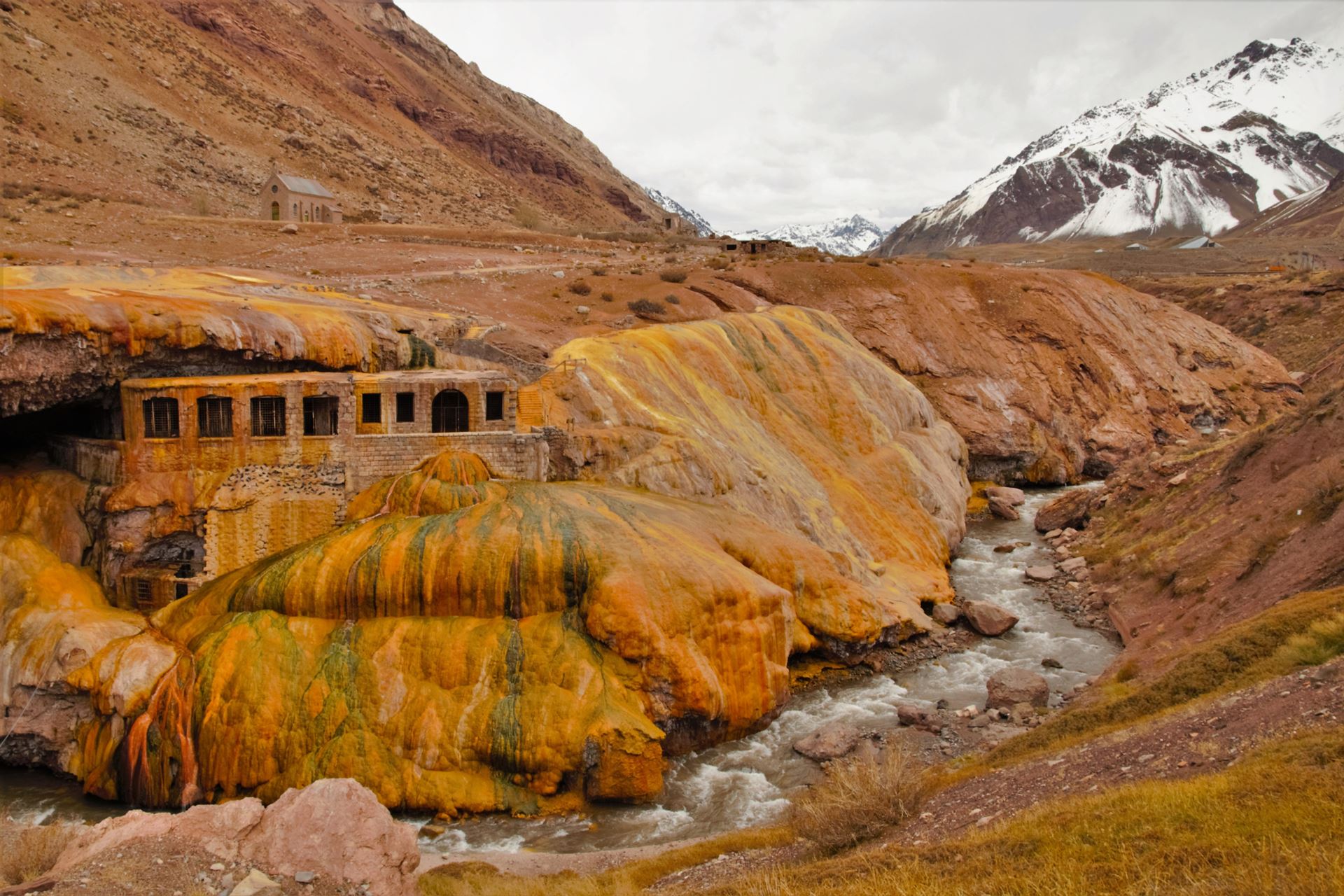
To get to Puente del Inca from Mendoza city, and It is important to start by saying that the distance is 190 kilometers and it takes approximately 3 hours of travel by car.
There are different ways to access:
- In your own car or renting a vehicle: leaving from the city, take National Route 40 towards the South, then head along National Route 7 towards the West towards to Uspallata and finally, continue towards Las Cuevas. The path is quite easy because they are usually in good condition and signposted.
- Excursion to Puente del Inca: a comfortable and fun option to do in private or in a group, with transfers from the hotel and a specialized guide to tell you all the curiosities of this area.
- Public transport: an economical option is to take a long distance bus. From the Mendoza terminal, you can take a bus from the Buttini line
Your climate
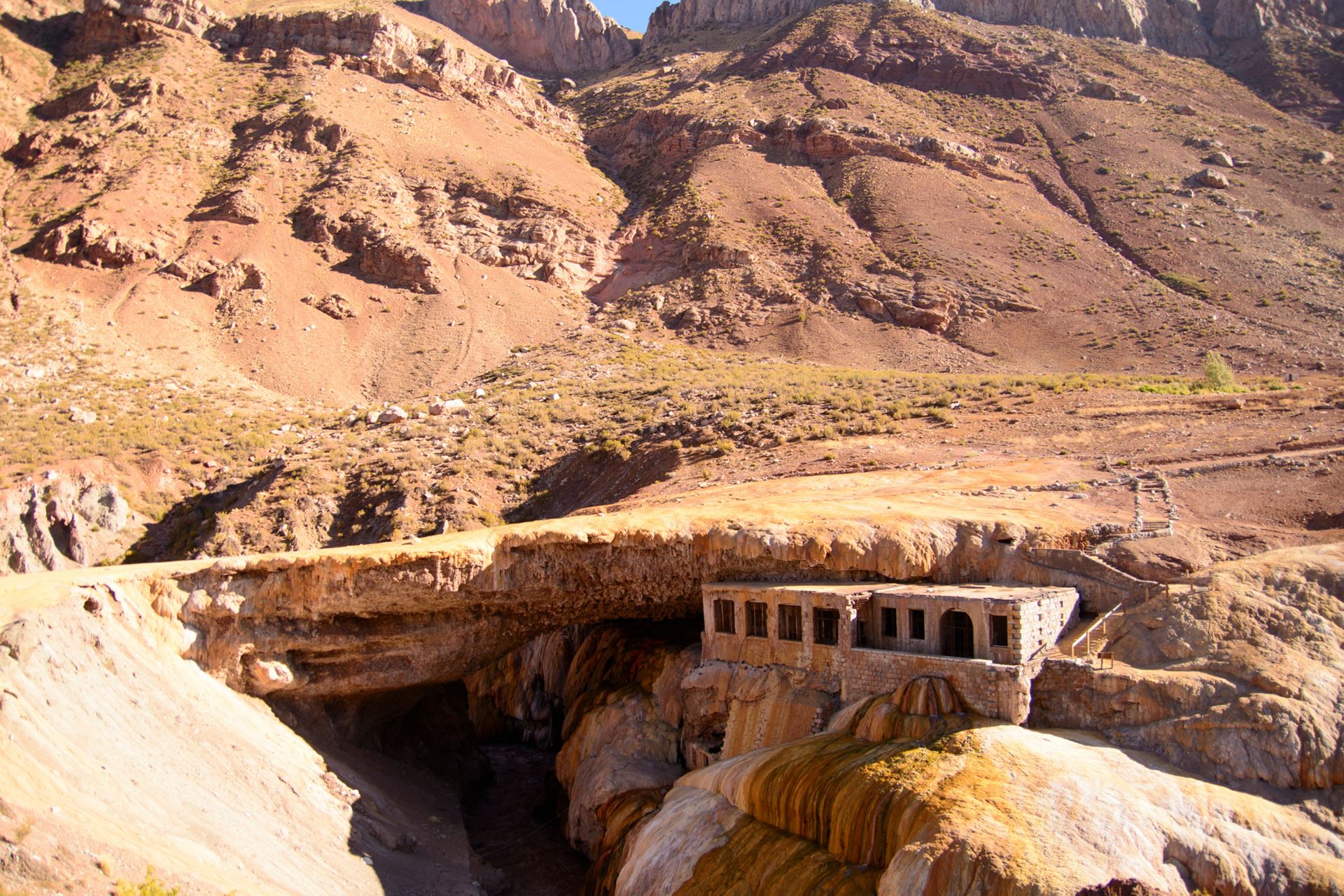
Being at 2700 meters above sea level, the climate in Puente del Inca is arid and dry, with little rain.Even so, at times where the Sun sets, the temperatures they can drop from 25 °C to 0 °C or below in a matter of minutes.
The recommended time to visit this natural monument is from December to April, as temperatures are warm and there is little rain. During spring and summer (September to March) temperatures average between 2 °C and 17 ° C. While during autumn and winter they are between -4 °C and 10 °C.
Recommendations:
- Drive only on the trails that are marked.
- If you want to go in winter, it is recommended that you rent clothes and snow boots.
- It is not allowed to light fires or extract stones, fossils and vegetation from the area.
- Throw your waste in the indicated places.
- It is forbidden to enter with animals
- It is not allowed to consume food during the tour, only you can eat in the area's barbecue area.
- If you smoke, put out your cigarette well and put away the butts.
If you want us to organize a excursion or tailor-made package in Mendoza, Contact us!